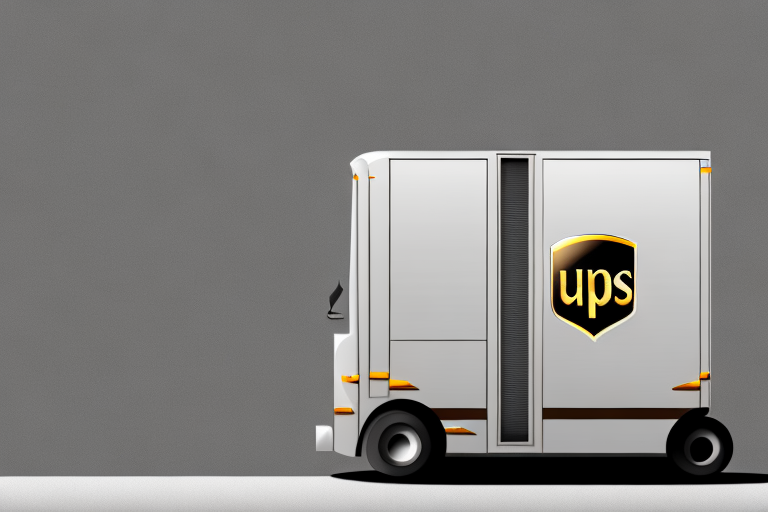Understanding the Factors Behind UPS Delivery Delays
UPS is one of the largest and most reliable delivery companies globally. However, despite its efficiency, there are instances when packages do not arrive on time, causing frustration and inconvenience for customers. This article delves into the various reasons behind UPS delivery delays and explores strategies to minimize these disruptions.
External Factors Affecting UPS Delivery Times
Traffic Congestion
Traffic congestion is a significant obstacle to timely UPS deliveries. Delivery trucks often navigate through busy streets and highways, which can lead to unexpected delays. Factors such as accidents, construction, and road closures exacerbate this issue. To mitigate the impact, UPS employs satellite technology and advanced routing algorithms to identify the most efficient paths, reducing travel time and avoiding traffic hotspots.
Weather Conditions
Severe weather conditions, including heavy rain, snow, and high winds, can impede UPS delivery schedules. Adverse weather not only makes driving hazardous but can also lead to flight cancellations or delays, affecting air shipments. UPS proactively notifies customers of potential delays due to inclement weather and prioritizes the safety of its drivers and employees by adjusting delivery schedules as necessary.
International Customs Regulations
For international shipments, customs regulations play a pivotal role in delivery timelines. Packages may be subject to inspections, which can delay processing and delivery. Additionally, customers might need to pay customs fees or duties, and any delays in these payments can further prolong delivery times. UPS offers customs brokerage services to expedite the clearance process, ensuring smoother international deliveries.
Operational Challenges Within UPS
Increased Package Volume During Peak Seasons
Peak seasons, such as holidays, see a surge in package volumes that can strain UPS’s logistics network. The high volume leads to longer sorting times and increased pressure on transportation systems. To address this, UPS hires seasonal workers and invests in automated sorting systems to enhance capacity and maintain delivery efficiency during these busy periods.
Sorting and Routing Processes
The efficiency of UPS’s sorting and routing processes is crucial for timely deliveries. Packages are scanned and sorted at various hubs before being dispatched to their destinations. The sheer volume of packages, especially during peak times, can challenge these systems. UPS continually upgrades its sorting technology and employs advanced tracking systems to ensure packages are accurately routed, minimizing delays.
Rural Deliveries
Delivering to rural areas presents unique challenges due to remote locations, unpaved roads, and lower package volumes. These factors can make prioritizing deliveries difficult and increase transit times. UPS collaborates with local post offices and invests in specialized delivery vehicles to enhance its rural delivery capabilities, ensuring reliable service to all communities.
Internal Factors Influencing Delivery Times
Human Error
Despite stringent quality control measures, human error can still occur within UPS’s delivery operations. Mistakes such as incorrect labeling, misrouting, or sequencing can lead to delayed or lost packages. Fatigue among delivery drivers, who often work long hours, can exacerbate these errors. To combat this, UPS enforces policies limiting consecutive work hours and mandates regular rest breaks to ensure drivers remain alert and efficient.
The Role of Technology
Technology plays a pivotal role in enhancing UPS’s delivery efficiency. Services like UPS My Choice provide customers with real-time updates and delivery customization options. Additionally, UPS utilizes drones and autonomous vehicles in select areas to expedite last-mile deliveries. Advanced technologies such as RFID tracking and artificial intelligence-driven routing algorithms further streamline operations, reducing the likelihood of delays.
Customer-Related Factors Impacting Delivery
Accurate Address Information
Providing accurate and complete address information is essential for timely UPS deliveries. Incomplete or incorrect addresses can lead to delivery attempts being unsuccessful, resulting in delays as drivers attempt to locate the correct destination. UPS advises customers to double-check their shipping details to ensure packages reach the intended recipients without unnecessary hold-ups.
Balancing Expectations with Realistic Timelines
While UPS strives to offer prompt and reliable delivery services, various factors can influence delivery timelines. Customers are encouraged to set realistic expectations by considering potential delays caused by external factors like weather or high package volumes. Understanding these variables can foster patience and reduce frustration when delays occur.
Strategies to Mitigate UPS Delivery Delays
Optimizing Delivery Routes
UPS leverages advanced algorithms and real-time traffic data to optimize delivery routes, ensuring drivers take the most efficient paths available. This not only reduces transit times but also helps in avoiding traffic congestion and road closures, thereby minimizing potential delays.
Investing in Advanced Sorting Systems
To handle high package volumes, especially during peak seasons, UPS invests in state-of-the-art automated sorting systems. These technologies enhance the speed and accuracy of package handling, ensuring that packages are quickly processed and dispatched to their respective destinations without significant delays.
Enhancing Rural Delivery Infrastructure
Recognizing the challenges of rural deliveries, UPS has developed specialized delivery vehicles capable of navigating difficult terrains. Additionally, partnerships with local post offices enable more efficient handling and distribution of packages in remote areas, ensuring timely deliveries.
Implementing Employee Training Programs
To reduce the incidence of human error, UPS implements comprehensive training programs for its employees. These programs focus on accurate package handling, efficient routing, and adherence to safety protocols, thereby enhancing overall delivery accuracy and efficiency.
The Future of UPS Deliveries: Technological Advancements
Adoption of Artificial Intelligence
UPS is exploring the use of artificial intelligence (AI) to further optimize its delivery processes. AI algorithms analyze vast amounts of data—from package volume trends to traffic patterns—to predict and address potential bottlenecks. This proactive approach enables UPS to adjust routes and schedules dynamically, enhancing delivery reliability.
Expansion of Autonomous Delivery Solutions
Building on its use of drones and autonomous vehicles, UPS is expanding these technologies to cover more areas. Autonomous solutions promise to expedite last-mile deliveries, especially in urban settings, by reducing reliance on traditional delivery trucks and minimizing delays caused by traffic.
Enhanced Tracking and Transparency
UPS continues to improve its tracking systems, offering customers greater visibility into the status of their packages. Enhanced tracking not only increases transparency but also allows for quicker resolution of delivery issues, ensuring that customers are always informed and can take timely action if necessary.
Conclusion
While UPS remains a leader in the delivery industry, various factors can influence the timeliness of its services. By understanding these factors—ranging from external challenges like traffic and weather to internal operations and customer-related issues—both UPS and its customers can work together to minimize delays. Continued investments in technology, operational efficiency, and customer service are pivotal in maintaining UPS’s reputation for reliable and timely deliveries.




















